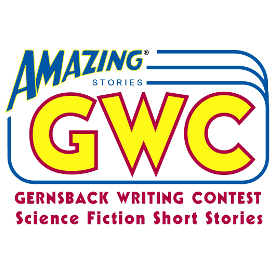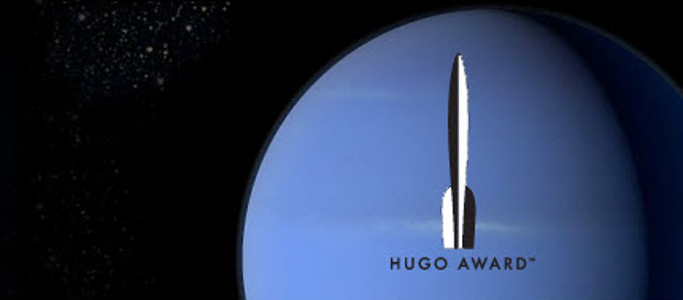“I Like Science Fiction, It’s Got Like Giant Robots and Stuff, Right?”
Science Fiction’s Self-Esteem Problem Part II: You Actually Read That Crap?
Science Fiction has never had an easy time with the literary establishment. The academics tend to view it as puerile escapism while fans see it as the-little-genre-that-could. The origin of both these views, paradoxically, is same: the Pulp Era. Serious minded scholars of literature think that SF is still stuck in the 1920s and the fans claim that SF has shed its pulp roots and grown up.
Neither of them is correct.
The Pulp Era is the very beginning of Science Fiction. Technically speaking, the term ‘pulp’ refers to the format of a printed magazine, that is, a cheaply printed magazine measuring 7 inches by 10. Pulp, with a capital P, has come to mean the style or type of story found in those early magazines. It is a by-word for juvenile, lurid, poor quality. Pulp was exploitive, cashing in on the demand for entertaining but intellectually stunted fiction. And that demand was huge. There were literally hundreds of pulp magazines, all of limited quality but seemingly unlimited quantity, publishing every kind of story you can imagine. Western, Detective, Romance, Gangster, War. The pulps were the early 20th Century equivalent of Rule 34; if you can think of a genre, there was a pulp magazine (probably several) for it.
It can be argued that the Pulp Era dates to fin de siecle magazines such as Argosy Magazine and The Popular Magazine, but what most people (particularly genre fans) mean when they talk about The Pulp Era is the plethora of cheap SF magazines printed between the 1920s and the 1950s. This very magazine, Amazing Stories, was the first magazine devoted to Science Fiction and is often considered to be one of the archetypes of Pulp. The first issue of Amazing Stories hit the stands in April 1926 and the pulp world was never the same. Hugo Gernsback had originally intended for the stories he published to mix entertainment with education, believing that fiction could edify the masses. It can, but like anything aimed at the masses, adventure was preferred to instruction. The quality of the stories quickly matched those of the other pulps.

Amazing Stories was a huge success, spawning dozens of imitators, most of dubious quality as well. This is where the reputation that SF gained among the literati originated. And rightly so. The pulps were a form of cheap entertainment for a poorly educated public with little money to spare, not high art. They offered an escape from the Great Depression and the intendant hopelessness. Pulp SF has a reputation for puerile escapism because it was puerile escapism.
Like any art form, Science Fiction began to evolve into something more sophisticated by the 1950s (coincidentally the end of the pulp era). The famous editor John W. Campbell Jr., helming Astounding Stories, presided over this change and is frequently accredited with single-handedly improving print SF. While his influence cannot be overstated, the quality of this period often is. Yes, Science Fiction had become something more than re-branded cowboys versus indians, but it was now “The Engineer as Hero”. Reflecting the time and culture as it did (as does all literature), the scientist was the Great White Hunter of the post-war era, capable of solving any problem, overcoming any obstacle, with only the power of his intellect and a few machines. And even in the midst of this increasing sophistication, there always remained an undercurrent of rayguns and rocketships.
It wasn’t until the 1960s and ‘70s with the New Wave when younger writers deliberately broke with the pulp and Engineer-Hero tradition that SF really began to become literature. Writers began to experiment with prose techniques, style, voice and theme. The rise of female SF authors helped to accelerate this radical departure from what SF was to what SF could be. Science Fiction, at long last, started to become art.
Or at least that is what the little-genre-that-could fans would have us believe. The literature critics certainly don’t believe it. Neither of them is correct, but neither of them is entire wrong. Science Fiction has become literature, it has become an art in its own right. The literati arn’t entirely wrong either because the Pulp Era never ended.
Go into any bookstore’s SF and Fantasy section (should they have one) and take a look. Count the shelves of non-media-tie-in books and count the shelves of media-tie-in. The difference may vary from place to place, but the media-tie-ins will out number the originals by a fairly large margin. These endless Star Trek, Star Wars, DragonLance, Halo, Mass Effect, Warhammer, and movie novelizations are the modern pulp: high quantity, low quality. These books are produced as quickly as possible for an audience that requires entertainment at all costs.
But, they fans cry, they are entertaining! They are popular! That is all the justification media-tie-ins require! Well, McDonald’s is the world’s most popular restaurant, and their food is pretty tasty, but wouldn’t base my diet around it. There are some truly bad media-tie-in novels out there (yes, there are some truly bad original SF novels as well) and they easily outnumber good SF by weight of numbers alone. And you can always tell when a genre (or sub-genre in this case) has “jumped the shark” when it becomes a parody of itself.
I am certain that there are some diamonds in the rough, but really, such examples cannot justify literally hundreds of Star Trek novels alone. Hell, the are even publishing novels based on video-games. If that isn’t pulp fiction, I don’t know what is. Some will claim that these are a gateway drug to better, original and well written Science Fiction, and they very well might be, for a small segment of the reading population.
But why the flood of modern Pulp SF? How did it come to dominate the shelves of the local Super-Books-A-Billions? For that, we have to turn to that most unstoppable of juggernauts: Hollywood.
Next Time: SF’s Self-Esteem Problem Part III, “Robots, Reboots and Remakes, How Hollywood Kills Serious Science Fiction”











Recent Comments